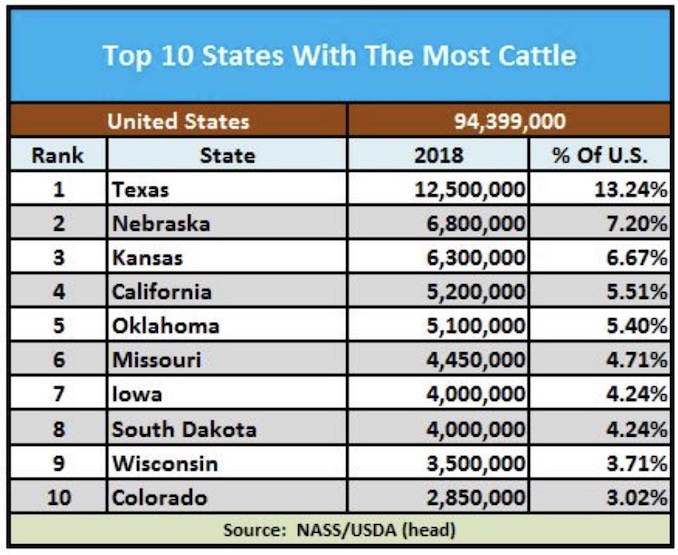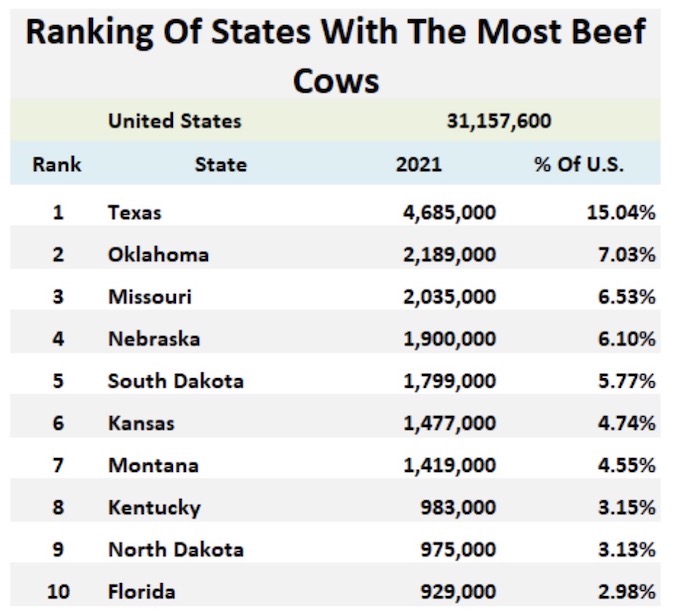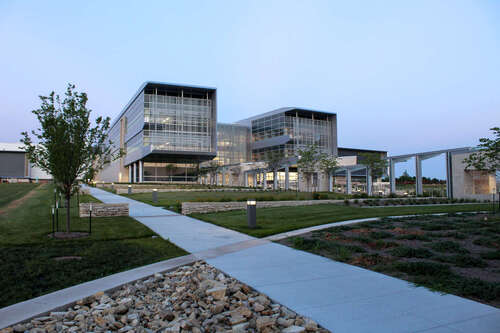This is excerpted from a May, 2021 Special Solari Report By Corey Lynn of Corey’s Digs: USDA Hitting Food Supply Chain with Cattle Surveillance and a Level-4 Animal Disease Laboratory . Resistance is fertile; grow at least some of your own. ~ Ed.
The USDA will have everyone believe that this is about “protecting the nation’s food supply and public health,” as indicated in their announcement of the new National Bio and Agro-Defense Facility (NBAF) in Manhattan, Kansas.
The BSL-4 Plum Island Animal Disease Center, overseen by DHS, is moving to Kansas under the new NBAF name and will now be owned, managed, and operated by the USDA. The new $1.25 billion facility is being constructed on Kansas State University’s Manhattan campus, adjacent to the university’s Biosecurity Research Institute, and is expected to be operational in 2023, the same year they want full compliance with RFID chips.
The NBAF animal disease research facility will be the only location in the U.S. where scientists will study live foot-and-mouth disease in livestock, which was accidentally released on Plum Island back in 1978. They will also be studying deadly zoonotic diseases that are highly contagious, can spread between humans and animals, and that don’t have any known vaccinations or treatments.
Kansas was chosen in 2008, from six potential locations, despite the fact that the Government Accountability Office conducted a study finding that “DHS has neither conducted nor commissioned any study to determine whether work on foot-and-mouth disease (FMD) can be done safely on the U.S. mainland…Therefore, GAO believes DHS does not have evidence to conclude that FMD work can be done safely on the U.S. mainland. While location, in general, confers no advantage in preventing a release, location can help prevent the spread of pathogens and, thus, a resulting disease outbreak if there is a release. Give that there is always some risk of a release from any biocontainment facility, most experts GAO spoke with said that an island location can provide additional protection.”
Another alarming virus sample housed at this laboratory is Rinderpest (cattle plague).
There are currently 27 institutions holding onto the live virus known as rinderpest (cattle plague). The last known case occurred in Kenya in 2001 and was declared eradicated in 2011, but the World Organization for Animal Health (OIE) say that the virus is stored in too many locations and there’s a risk that someone could accidentally release it, or even do so on purpose. OIE has been trying to convince research centers to destroy the samples because if it were released it would be devastating. Rinderpest is a highly contagious viral disease in livestock, particularly cattle and buffalo, with a high casualty rate. Rinderpest has not been known to infect humans.
The OIE and the UN’s Food and Agriculture Organization have named five research centers as authorized locations for storing the virus. Guess which U.S. research center made the cut? The Plum Island Animal Disease Center, which is moving to Kansas.
Dr. Hamilton, who formerly worked for OIE, as well as the UK Government, published this survey in December 2015 that states the Animal Disease Center should maintain a sample of the virus, just two months after taking a newly created position at Kansas State University as the new Executive Director for International Programs, which includes global health security agendas and biological threat reduction.
Just how significant are cattle in Kansas?
The top 10 states with the most cattle.

The top 10 states with the most beef cows account for roughly 59% of the inventory in the US.

Is The USDA “Protecting The Nation’s Food Supply and Public Health?”
Does this statement by the USDA add up? Is putting a BSL-4 animal disease research facility in the middle of the meat belt a wise idea? The GAO and numerous others certainly don’t think so. Do the USDA, World Economic Forum, and countless other organizations and government arms have other motivations?
The USDA’s prominent footer on their website certainly reveals some of their motives, including “climate smart food.” They want to “transform America’s food system.” Sometimes, they tell it exactly like it is.
USDA touches the lives of all Americans each day in so many positive ways. In the Biden-Harris Administration, USDA is transforming America’s food system with a greater focus on more resilient local and regional food production, fairer markets for all producers, ensuring access to safe, healthy, and nutritious food in all communities, building new markets and streams of income for farmers and producers using climate smart food and forestry practices, making historic investments in infrastructure and clean energy capabilities in rural America, and committing to equity across the Department by removing systemic barriers and building a workforce more representative of America.
One way they want to “transform America’s food system” is through gene editing and lab-grown meat. In 2018, the USDA and National Institute of Food and Agriculture (NIFA), released their competitive grants announcement. One priority program area was (pgs 58-59):
Technologies and scientific advancements of interest include, but are not limited to, gene editing; gene drives; the analysis of big data, and tools and approaches for collecting big data from agricultural producers; agricultural nanotechnology, and unconventional sources of protein (e.g., lab-grown meat).
They go on to say, “Technologies such as gene drives and genome editing, big data, nanotechnology, and lab grown meat, have tremendous capability in shaping the future of agriculture, requiring the scientific community to develop effective means of communicating and engaging with the public.”
Is this how Americans want them to “shape the future in agriculture?” Perhaps it’s time for Americans to get more involved in what is happening with the food supply chain, control over our farmers and ranchers, protesting a BSL-4 lab in the middle of the meat belt, paying attention to what is going on in this country, and getting vocal about it.
Author
Find Corey Lynn's research ("Corey's Digs") for Catherine Austin Fitts' Solari.com listed here.
![]() Don't forget to feed the birds. Donate here
Don't forget to feed the birds. Donate here







